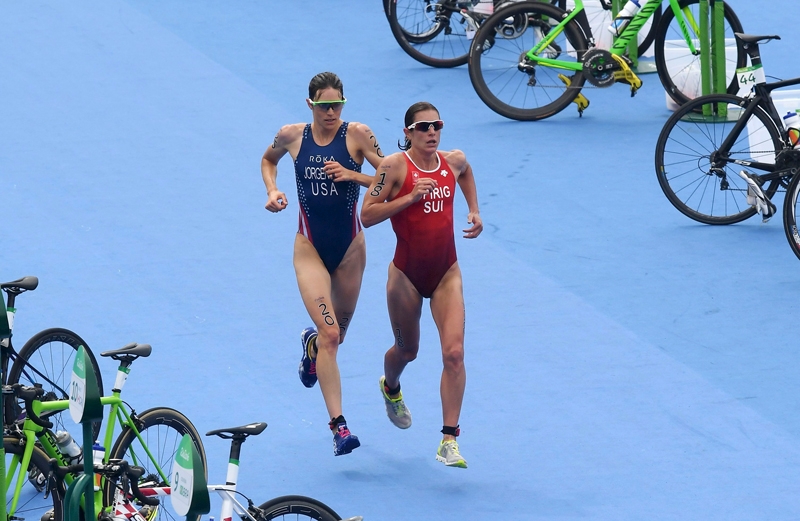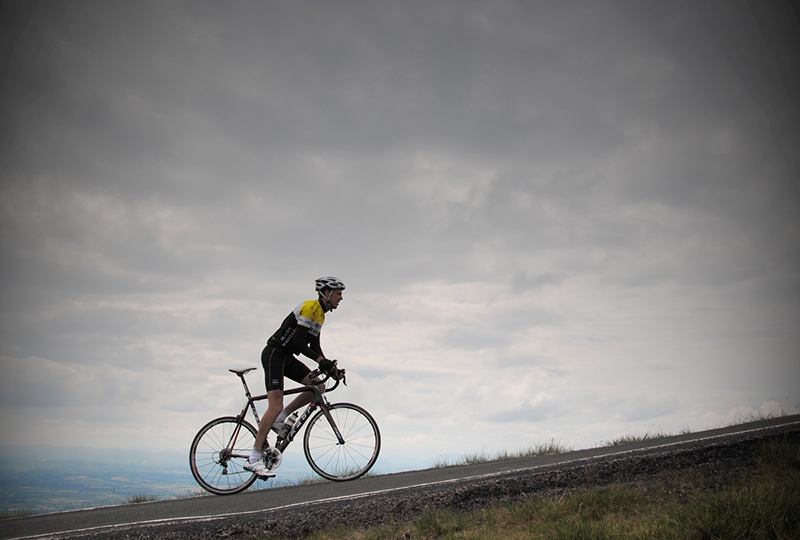Fast-track recovery: the essence of recovery nutrition

SPB pulls together the key evidence-based, ‘best-practice’ recommendations for recovery nutrition, and explains how to apply them
It’s probably not exaggerating to say that providing you’re getting adequate rest, the next single most important thing you can do to boost performance is to improve your recovery nutrition! In broad-brush terms, there are four major nutritional requirements for rapid recovery after long and/or strenuous exercise (see box 1).Of these nutrients, carbohydrate is the most researched, and over recent years, much has been written about the benefits of consuming carbohydrate following exercise. As a result, we now know that the highest muscle glycogen synthesis rates occur when relatively large amounts of carbohydrate (1 – 1.5 grams per kilo of bodyweight per hour) are consumed immediately after exercise, and then at 30–60 minute intervals thereafter, for up to five hours (depending on the duration of the prior exercise)(1). For a 70kg athlete for example, this would mean consuming 70 to 115g of carbohydrate immediately after exercise and then repeating at regular intervals. After a hard 1-hour run, repeating this dose just once would probably suffice. After a hard 3-hour run, he/she might need to repeat this dose hourly for 5 hours.
Box 1: Nutritional requirements for rapid recovery
- Carbohydrate – needed to synthesise and replenish muscle glycogen (the body’s premium grade fuel for strenuous exercise), and also to top up liver glycogen stores, which serve as a reserve to maintain correct blood sugar levels. Post-exercise carbohydrate also stimulates the release of a hormone called insulin, which helps to drive glucose (from carbohydrate) and amino acids (from protein – see below) into hungry muscle cells, accelerating recovery;
- Protein – needed to supply the amino acid building blocks required to repair and regenerate muscle fibres damaged during exercise, and to promote muscle hypertrophy (growth) and adaptation;
- Water – to replace fluid lost as sweat and to aid the process of glycogen storage in muscle (each gram of glycogen synthesised in muscle requires around three grams of water to ‘fix’ it in place;
- Electrolytes – to replenish minerals lost in sweat (eg sodium, chloride, calcium, magnesium).
Meanwhile, although protein is also known to be important for post-exercise recovery, it’s much more difficult to study. In recent years however, increasingly advanced scientific techniques have helped to shine a light into post-exercise protein intake and the latest research on optimum timing and protein types for recovery is proving fascinating. Moreover, scientists have begun to fully appreciate why protein is so important for endurance athletes such as runners, cyclists and triathletes. While it’s true that these sports don’t require high levels of muscle mass or brute strength, consuming adequate protein to regenerate muscle mass broken down during exercise is absolutely vital for all the reasons listed in box 2.
Key point #1: All athletes need protein as well as carbohydrate in order to recover rapidly
Box 2: The importance of muscle mass for endurance sports
- All other things being equal, a muscle with a larger cross-sectional area is able to generate more force and power (ie is stronger) – force needed to propel you forward whether swimming, cycling, rowing, running etc.
- The higher the peak force and power your muscles can produce, the easier it is for them to maintain a given workload (eg force applied to the cranks during cycling, or powering through the water when swimming) because they can do this by working at a lower % of their maximum force output;
- .More muscular strength and power allows for better sprint performance (eg at the end of a race or to break away from your opponents).
- Stronger muscles are better able to withstand the stress and strains of repeated impact and loading – ie reduce your risk of injury.
Carbohydrate and protein double whammy
Back in the 1980s and 90s, scientists tended to focus almost exclusively on post-exercise carbohydrate for promoting recovery. But while carbohydrate is absolutely essential for replenishing muscle glycogen, we’ve since discovered that carbohydrate and protein work synergistically in the body, which means that better recovery is achieved when carbohydrate is combined with protein.To illustrate this, consider three important studies. In the first, researchers from the University of Connecticut compared the effects of a pure carbohydrate drink to a chocolate milk drink (providing a carbohydrate/protein blend containing the same number of calories) on muscle protein synthesis in runners in the 3-hour period following a 45-minute run(2). They observed that chocolate milk drink increased muscle protein synthesis by 38% in comparison to the carbohydrate-only (see figure 1) – ie was significantly more effective in promoting recovery.
Figure 1: Carbohydrate-only versus carbohydrate and milk protein drink (chocolate milk)

Key point #2: consuming protein (especially whey protein) along with carbohydrate after exercise accelerates recovery compared to consuming only carbohydrate
In another study, researchers looked at muscle protein synthesis and different recovery formulations after high-intensity cycling(3). Twelve cyclists completed 100 minutes of high-intensity cycling, then over the next four hours at hourly intervals, ingested one of three recovery drinks:- 70g protein/180g carbohydrate/30g fat (high protein)
- 23g protein/180g carbohydrate/30g fat (low protein)
- 0g protein/274g carbohydrate/30g fat (zero protein)
Figure 2: Muscle tissue synthesis: zero vs. low vs. high protein recovery drinks(3)

Muscle tissue synthesis was much lower when the cyclists drank the carbohydrate-only drink for recovery. The low-protein drink meanwhile produced almost as much muscle synthesis as the high-protein drink containing triple the protein! NB: Myofibrillar FSR = amount of muscle tissue synthesis measured in % per hour.
In a third study, the vital role of leucine in recovery was also illustrated in cyclists who performed interval-training bouts lasting between 120 and 150 minutes on days 1, 2 and 3, followed by a sprinting test on day 5(4). For 90 minutes after each interval bout, the cyclists ingested either a leucine-rich protein, high-carbohydrate supplement or a supplement containing exactly the same number of protein and carbohydrate calories but where the leucine content of the protein was poor. In the day-5 sprint test, the cyclists who’d ingested the leucine-rich protein recovery drink improved their mean sprint power by 2.5% and their perceived overall tiredness was reduced by 13%. In other words, feeding protein rich in leucine (along with carbohydrate) produced better subsequent cycling performance than the equivalent amount of protein that was not rich in leucine
How much, how often?
A popular approach among some athletes is to simply ensure that you consume plenty, on the basis that ‘it’s better to be safe than sorry’. The problem is that there’s only a finite amount of protein that can be absorbed by the muscles at any one time – the so called ‘muscle-full effect’. Consume more than this and the extra is simply broken down and oxidized for energy or stored as fat.Storing excess protein as fat is obviously undesirable. But another downside is that by consuming excess protein during the recovery period, you could well be displacing valuable carbohydrate calories (remember – carbohydrate is absolutely vital to replenish muscle glycogen and facilitate full recovery). The best approach is to consume enough protein to maximally feed the muscles without consuming an excess.
A number of recent studies on recovery in athletes have concluded that approximately 0.25 grams of high-quality protein (such as whey) per kilo of bodyweight – eg 20 grams for an 80kg athlete – is an ample amount, and around the most that can be utilized by the body after one feeding(5-7).
Doubling or even tripling your protein intake above this level seems to produce no additional recovery benefits. Having said that, a very recently published study into protein and recovery concluded that after exceptionally hard or long bouts of exercise, the 20 gram per feeding guideline could be raised a little - to approximately 0.38 grams per kilo of bodyweight, which is around 30 grams for an 80kg athlete(8).
Key point #3: After training, muscles can only absorb around 20g of protein in each feeding. Rather than consuming a large quantity in one go, athletes should consume 20g of protein immediately after exercise and repeat every three hours for maximum total absorption
Protein timing
Some researchers have speculated that taking some protein during exercise (in a carbohydrate plus protein drink), or even before exercise might give athletes a head start in the recovery race. However, the studies to date have provided little evidence that this is the case. Indeed, there’s some evidence that protein during or before might actually reduce recovery and muscle protein synthesis after exercise(9).The reason for this is that part of the recovery stimulus arises due to the rapid rise in blood levels of amino acids once protein is consumed. So if there are already large quantities of amino acids s around in the bloodstream, taking more after exercise produces a rise that is proportionately less steep. Overall, the best advice is to take a recovery drink immediately after training when the window of recovery is wide open.
Key point #4: Remember the ‘3R’ rule – rehydration, refueling (with carbohydrate) and repair (with protein) and apply it as soon as you complete your training/competition!
Protein frequency
In a landmark study, researchers compared 3 different frequencies of whey protein feeding on recovery and muscle repair over a 12-hour period following training and an initial recovery drink(10):- 2 x doses of 40g every six hours
- 4 x doses of 20 grams every three hours
- 8 x doses of 10 grams every 1.5 hours
Finally, it’s worth adding that pre-sleep protein ingestion seems to significantly benefit muscle recovery and repair. One study suggests that 40 grams of casein protein before bed stimulates muscle protein synthesis overnight(11). And a very recent study on subjects undergoing a 12-week training program showed that a low-fat pre-sleep drink containing 27.5 grams of protein and 15 grams of protein boosted muscle mass and strength gains compared to no pre-bedtime drink (12).
Key point #5: The process of recovery continues during sleep; athletes should therefore ensure overnight recovery is maximized by consuming some slow-release protein before retiring.
Building a recovery plan
Okay, let’s put all this info together and show how athletes can build your own recovery plan (see boxes 3 and 4). These assume that you begin with a post-exercise recovery drink and follow up with a carbohydrate/protein snack or meal. Of course, you don’t have to use a recovery drink – you can always consume a snack/meal immediately after training. Bear in mind however that recovery drinks containing whey protein offer a distinct advantage. Firstly, whey provides rapid-releasing amino acids for a bigger recovery stimulus. Secondly, whey is especially rich in leucine, which as we’ve seen, seems to play a key role in promoting recovery.Box 3: Recovery suggestions
- These assume a bodyweight of 80 or more kilos. Lighter athletes should reduce the amounts proportionately – eg a 50kg athlete should use 5/8ths of these quantities (multiply amounts by 0.63), a 60kg athlete should use 6/8ths of these quantities (multiply amounts by 0.75) etc.
- For snacks and meals, see the panels below. Combine any 20g portion of protein with 80 g of carbohydrate.
- All these figures are based on hard training sessions. For exceptionally hard/intense workouts, increase the immediate post-exercise protein intake to 30g. For lighter sessions, reduce both the protein and carbohydrate quantities by a third.
- Immediately after exercise: consume recovery drink supplying 20g protein plus 80g carbohydrate
- 1 hour post exercise: consume a carbohydrate snack supplying 80g of carbohydrate
- 3 hours post exercise: consume a snack or meal supplying a further 20g protein plus 80g carbohydrate.
- Bedtime: consume a drink contain around 25g of milk protein and 15g of carbohydrate
- Immediately after exercise: consume recovery drink supplying 20g protein plus 80g carbohydrate
- 1 hour post exercise: consume a carbohydrate snack supplying 80g of carbohydrate
- 2 hours post exercise: consume a carbohydrate snack supplying 80g of carbohydrate
- 3 hours post exercise: consume a snack or meal supplying a further 20g protein plus 80g carbohydrate.
- 6 hours post exercise: consume a snack or meal supplying a further 20g protein plus 80g carbohydrate.
- Bedtime: consume a drink contain around 25g of milk protein and 15g of carbohydrate
- Immediately after exercise: consume recovery drink supplying 20g protein plus 80g carbohydrate
- 1 hour post exercise: consume a carbohydrate snack supplying 80g of carbohydrate
- 2 hours post exercise: consume a carbohydrate snack supplying 80g of carbohydrate
- 3 hours post exercise: consume a snack or meal supplying a further 20g protein plus 80g carbohydrate.
- 4 hours post exercise: consume a carbohydrate snack supplying 80g of carbohydrate
- 5 hours post exercise: consume a carbohydrate snack supplying 80g of carbohydrate
- 6 hours post exercise: consume a snack or meal supplying a further 20g protein plus 80g carbohydrate.
- Bedtime: consume a drink contain around 25g of milk protein and 15g of carbohydrate
Box 4: Snacks and meals
*Combine any one of the protein options (all providing 20 grams of protein) with any one of the carbohydrate options (providing 80g of carbohydrate).*Low-fat protein options are preferred in the early stages of recovery as amino acid release will be more rapid (fat slows gastric emptying).
*Most of the carbohydrate foods also supply some protein too – a combination will therefore deliver slightly more than 20g of protein.
| 20g of protein option | 80g of carbohydrate option |
| 110g of white fish (cod, haddock etc) | 5 medium slices of bread |
| 90g of salmon fillet | 10 crispbreads |
| 75g of canned tuna | 4 medium bananas |
| 100g of beef steak | 5 medium pears |
| 90g of chicken breast | 400g of Cooked pasta |
| 160g of cottage cheese | 280g of cooked rice (brown or white) |
| 65g of cheddar cheese | 240g of baked potato |
| 500mls of skimmed milk | 150g of cooked couscous |
| 2 small eggs | 2 small slices of medium pizza |
| 200g of baked beans | 4 tablespoons of sugar-free muesli |
| 70g of pumpkin seeds | 125g of oat flakes |
References
- Clin Sports Med. 1984 Jul;3(3):595-604
- Med Sci Sports Exerc 2012; 44(4): 682-691
- Med Sci Sports Exerc. 2015 Mar;47(3):547-55
- Appl Physiol Nutr Metab. 2011 Apr;36(2):242-53
- FASEBJ. 2005; 19, 422–424
- Am.J.Clin.Nutr. 2009; 89, 161–168
- Am.J.Clin.Nutr. 2014; 99, 86–95
- Front. Physiol. September 2015; 6:245
- Am.J.Clin.Nutr. 2010; 92,1080–1088
- J.Physiol. 2013; 591,2319–2331
- Med.Sci.SportsExerc. 2012; 44,1560–1569
- J.Nutr. 2015; 145,1178–1784
You need to be logged in to continue reading.
Please register for limited access or take a 30-day risk-free trial of Sports Performance Bulletin to experience the full benefits of a subscription. TAKE A RISK-FREE TRIAL
TAKE A RISK-FREE TRIAL
Newsletter Sign Up
Testimonials
Dr. Alexandra Fandetti-Robin, Back & Body Chiropractic
Elspeth Cowell MSCh DpodM SRCh HCPC reg
William Hunter, Nuffield Health
Newsletter Sign Up
Coaches Testimonials
Dr. Alexandra Fandetti-Robin, Back & Body Chiropractic
Elspeth Cowell MSCh DpodM SRCh HCPC reg
William Hunter, Nuffield Health
Keep up with latest sports science research and apply it to maximize performance
Today you have the chance to join a group of athletes, and sports coaches/trainers who all have something special in common...
They use the latest research to improve performance for themselves and their clients - both athletes and sports teams - with help from global specialists in the fields of sports science, sports medicine and sports psychology.
They do this by reading Sports Performance Bulletin, an easy-to-digest but serious-minded journal dedicated to high performance sports. SPB offers a wealth of information and insight into the latest research, in an easily-accessible and understood format, along with a wealth of practical recommendations.
*includes 3 coaching manuals
Get Inspired
All the latest techniques and approaches
Sports Performance Bulletin helps dedicated endurance athletes improve their performance. Sense-checking the latest sports science research, and sourcing evidence and case studies to support findings, Sports Performance Bulletin turns proven insights into easily digestible practical advice. Supporting athletes, coaches and professionals who wish to ensure their guidance and programmes are kept right up to date and based on credible science.









